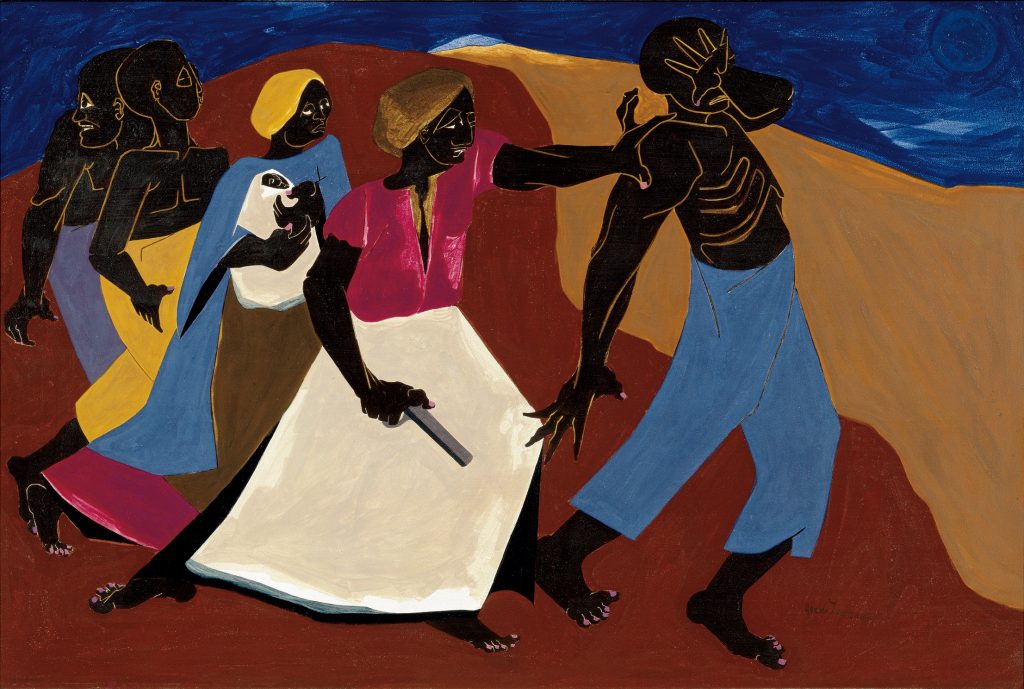Activity Idea: Forward (Quick Tip)
Use the following strategies with Jacob Lawrence’s Forward.
- Making inferences helps us predict what is coming next in a story or a work of art. An artist may present only one scene or chapter of a story. Consider what the scenes that came before and after Forward might look like. Draw these scenes or describe them with words. Share them with the class. (Use a beginning, middle and end graphic organizer to help students sort their ideas.)
- Concrete poems communicate a feeling or an idea through words and form. Look closely at the man in front of Harriet Tubman. List words or phrases describing how you think he might be feeling and what he might be thinking. Select the best words or phrases from your list and combine them in a poem that takes the form of forward motion. (As an alternative to the list, give students a copy of the painting with speech bubbles next to each figure. Have them use the speech bubbles to organize their thoughts.)
- Imagine you are a reporter traveling with the slaves and Tubman on the Underground Railroad. Write an account of the experience for the North Star newspaper. Describe the setting, time of day, smells and sounds. Provide information about how the group felt before, during and after their escape.
- Artists help us determine the main theme in a painting by using the elements of art. What colors do you notice first in this painting? Why do these attract your eye? Why does the artist use these colors in these particular locations? (To draw attention to the central figure, Harriet Tubman.) What are some other ways the artist attracts your attention to the central figure? (Use of diagonal lines; central location; gun.) What part does that character play in the story? (Main character.) How do the other characters support the story? (Direct attention to her; add context.) List some other strategies you can use to determine what is important in a story or a painting.
- Jacob Lawrence was a writer as well as an artist. Read one of his short picture books, such as Harriet and the Promised Land or The Great Migration. Consider why the artist may have chosen these subjects for his stories and art. Why might they have been important to him? What do these works say about him? Write a brief description of Lawrence using his books and works of art as your only references. Then compare your description with a biography of the artist.
- Some of the figures shown with Harriet Tubman seem fearful. Why do you think they are frightened? Think of a time when you were afraid to take a risk. Describe that experience and its outcome. Consider how hindsight changes your view of that experience. As an extension, create a drawing or painting that represents your feelings during that experience. (For younger students, use a beginning, middle and end graphic organizer to help them think carefully about the effects of the risk they took. Have them place their risk in the middle of the organizer.)

